Another update to "The State of Ramen in Chicagoland"
Checking out 5 places, and coming up with top 5 inside the city
Short updates again:
My son’s second 3-word phrase (that I heard) was “two taco truck”.
I’m glad I started this section, because I can plug a kickstarter by my friend. It’s for a tabletop game called Gun It. In his words: “The way I would describe it is simply: A love letter to that expectant moment in an action movie, just before all hell breaks loose. The coolest moment is not the ending, but that tension as the guns are cocked, everyone’s steeling themselves for what’s about to happen.”
I don’t think I’ve playtested it, but I remember him explaining the concept to me.Smart Museum at the University of Chicago is doing an art exhibition on the Meiji era in Japan until 6/9. Meiji (1868-1912) is when Japan was quickly modernizing after centuries of near isolation. We’ll definitely see this at some point.
The title is self-explanatory if you’ve seen my 2 earlier posts:
I do recommend the first post in order to get the big picture of what kinds of ramen exist in the area. I’m pleased to report that I’ve now made it to all the ramen places that I definitely wanted to check out when I wrote the first post last June. That includes all of the restaurants I’ll talk about below.
Many of the visits were weekday lunches—unquestionably the best part of remote work—but Monster and Akahoshi were dinner-only1, which required more planning, i.e. obtaining a babysitter. If you want my top recommendations, start reading from the Monster Ramen section.
And here’s the map of all the places I’ve talked about in this series.
Kizuki
Kizuki is a Japanese ramen chain inside city limits, which is somewhat unique as I explained in the first post. I went to the Wicker Park location. There’s another location near North and Clybourn.
I had just had takoyaki (fried octopus balls) at Toritetsu in Mitsuwa, and felt the urge to compare. Both versions were very nice.
One thing to note about Kizuki is that they offer many kinds of ramen with no obvious sign of specialization. I suspect most of the bowls are solid but not exceptional. They did push their garlic tonkotsu shoyu ramen as the most popular one, and it was very enjoyable and comforting on a cold January day.
Ramen House Shinchan
Shinchan was the one Japanese ramen place in northwest suburbs that I hadn’t been to. From what’s been written in English about this restaurant, it’s hard to tell that they specialize in the local cuisine of Nagoya. Nagoya is the 3rd largest city in Japan2, but it’s somewhat overlooked as it’s not a major tourist destination. That’s a shame, because Nagoya has many unique local dishes.
One of them is miso katsu, literally just tonkatsu (deep-fried pork cutlet) with miso sauce on top.
It’s an unusual combination, but it works.
My wife ordered the miso ramen, which was pretty good, but didn’t have as strong of a flavor as ones at Ramen Misoya (and Akahoshi Ramen, see below).
I did consider getting Taiwan ramen, another Nagoya specialty that we were familiar with3. Taiwan ramen is a spicy ramen that was created by a Taiwanese chef in Nagoya. It’s not really Taiwanese food, other than the chef having that background. But ramen is Chinese and Japanese to begin with, so this is all great…I think.
But I chose to get best condition ramen, or beto kon ramen.
Supposedly, this makes you feel healthier, hence “best condition”.
But wait. According to the Japanese Wikipedia page on beto kon ramen, this dish was created in 1969 and the name actually comes from Viet Cong, which is pronounced beto kon in Japanese. The creator sympathized with their bravery. “Best condition” is an alternative etymology that they concocted when the Vietnam War became more controversial4.
Anyway, I didn’t know this history when I was eating it. The stir-fried vegetables are spicy, and there is a lot of it. The mountain of veggies is reminiscent of Jiro-style ramen. You might feel like you’re eating something other than ramen at times. It is definitely not everyone’s bowl of ramen, but it’s worth trying if you’re feeling especially hungry.
Oiistar
We’re back in Wicker Park for this one. Oiistar has been around for more than 10 years.
As I mentioned in the Daisies post, when you see unusual dishes, there’s a good chance it’s something the kitchen has a lot of confidence in. Of the bun options, duck breast stood out to me as an uncommon topping. And it was a good one, with jalapeño chutney and raisins adding sweet, sour, and spicy to the mix.
Oiistar has a strong Korean influence, and I would guess that the spicy ramens are good. But I wasn’t feeling like a spicy ramen, so I got their paitan (tonkotsu) shio ramen. This was a nice ramen with a broth full of umami. The pork belly had a nice, charred texture, but had little flavor—my only disappointment here.
Monster Ramen
Monster Ramen specializes in gyukotsu (cattle bone broth) ramen. This isn’t a common style in Japan, existing mainly in the western part of Tottori, the least populous prefecture in Japan5. Gyuro Ramen in West Loop also specializes in gyukotsu (here’s what I wrote about them), so this is an interesting Chicago-specific phenomenon. While I enjoyed Gyuro Ramen just fine, Monster Ramen is much better.
We were in Logan Square to see a friend’s circus show at 8pm. When we got to Monster, it was 7 already, and there were no seats available. Just before we were about to give up, at 7:23, we were seated. So…yes, we ate very quickly here.
Almost everything is beefy at Monster, so of course gyoza had to be beef gyoza. They have multiple versions: yaki gyoza (fried), sui gyoza (boiled), and loaded (fried with extra toppings). We opted for the fried version, and watched as a cook put the dumplings on a griddle, squirting water and placing a cover to get a bit of steaming action.
The skins were thin and delicate, the contents juicy. It’s a great appetizer.
Their special bowl of ramen is The Monster, which has wagyu rib roast, wagyu chashu, and “beef jam” as toppings. That seemed a bit much, so I went with the less over-the-top miso wagyu ramen. The piece of beef you see is the beef chashu. It’s not quite as fatty as the usual pork chashu, and it did match the rest of the bowl.
The highlight, though, was the shio house ramen that my wife got.
Putting yuzu in a shio ramen to lighten the broth with citrus isn’t unusual; in fact, Kizuki also has a yuzu shio ramen. But the balance here, yuzu against the beefy broth and beef jam, was perfect. My wife finished the soup. This is one of the best ramens in Chicago.
We finished the meal at 7:52, and made it to the circus show just about on time.
Akahoshi Ramen
Before writing this, I really did have to go to Akahoshi, the buzziest ramen place in Chicago at the moment. Their reservations run out extremely quickly, so we were going for walk-in slots.
We got there before 4:20 last Saturday, and there was no one waiting outside the door at that point. We came back a little after 4:30, and saw 5-10 people waiting, including a coworker of mine. This was a total coincidence, and it did make the wait more enjoyable6.
Chef Mike Satinover—a.k.a. Ramen__Lord—came out just before opening to tell us the walk-in process. Since we were among the first 15, we were able to sit immediately. If you miss that cutoff, you’ll get an estimate of when you can sit, and they’ll text you when they’re ready for you.
Akahoshi’s menu is very tight. There’s just 4 kinds of ramen: miso, shoyu, soupless tantanmen, and aburasoba. They make multiple kinds of noodles in house to match the soup. With that kind of dedication, it’s a lot of work to add more kinds of ramen.
Outside of ramen, they have 3 kinds of rice bowls, some drinks, and that’s it. No appetizers, no desserts.
They do have a monthly special ramen, which is Toyama black ramen this month.
I wasn’t familiar with this style, so I’ll just quote their menu:
This style emerges in 1955. Originally made by boiling down soy sauce into a syrupy concoction that tainted the soup pitch black, the standard approach is notably salty. Ours balances this approach with a unique blend of soy sauces, giving the dish its striking appearance while still being easy to drink.
Anyone who writes like this on a menu gets a point from me. And the description was pretty accurate. It’s a more concentrated version of shoyu soup, and yet it wasn’t close to being too salty. There’s just one complaint, which was that the chashu was a bit cold when I got the bowl.
If you live in Chicago and you like ramen, you do need to try their miso ramen. Satinover lived in Sapporo for study abroad, and fell in love with Sapporo-style miso ramen. This is his take on the style.
For me, the soup gets right to the boundary of too much salt, too much umami, too much thickness, without going over. It’s a soup that tries to knock you over. My wife, who is very picky about bean sprouts and often has to avoid them, loved the sprouts in this. So here’s another one of the best bowls of ramen in Chicago.
Final note (for now)
My wife and I agree that the 5 best ramen places within the city of Chicago are the following (in alphabetical order):
Akahoshi Ramen
Menya Goku
Monster Ramen
Ramen TakeyaRamen Wasabi Fulton Market (under renovation at the momentsee updates below)Ramen Wasabi Logan Square
Akahoshi and Monster are the newcomers, and the other 3 are owned by the same people. These are the places we’d be very happy to keep going back to.
I won’t even try to rank the suburban places on the same scale because they’re much more focused on Japanese diners. I would probably go with Santouka and Chicago Ramen (multiple locations) as the top choices there.
There’s still a few shops that I think I should check out. The one I would mention is Rudy’s Ramen near the Blue Line Division stop, which is extremely well-reviewed online.
Update (2024-04-26): My understanding when I wrote the above was that Ramen Takeya was under renovation and would return. It turns out that the renovation made it into a Korean pub. I’m comfortable in saying that Akahoshi, Menya Goku, and Monster Ramen are the top 3 ramen shops in the city of Chicago now. Wasabi’s ramen doesn’t quite reach the same heights, but it has the most extensive non-ramen menu out of the 4.
Update (2024-12-27): The Ramen Takeya space has now become the Fulton Market branch of Ramen Wasabi. It’s the same owners, so I expect it to be somewhere in this top 5 category, but I’ve yet to check it out.
What I’m listening to now
I wasn’t short on music I wanted to talk about this time. First, I found Melenas, an indie band from Pamplona, Spain. But then I found Grande Mahogany, a Ghanaian-Finnish psychedelic soul artist. A Ghanaian-Finnish psychedelic soul artist. But somehow there was something I enjoyed more.
La Sécurité is another band from Montreal7. Their self-claimed genre is art punk and that’s apt. The best example is “Hot Topic”, which is punk rock in 5/4 time. After listening to the album a couple of times, I learned that this band is a collection of musicians from Choses Sauvages and Laurence-Anne among other bands. I liked these two already.
Most of the songs are pretty fast as you’d expect for punk, but I do like the one slow song, “K9”. This is also the only song with both English and French lyrics—other songs are either all English or all French.
Monster does serve weekend lunch.
I’m going by metropolitan area population. Yokohama (the birthplace of ramen) is even bigger than Osaka by municipal population, but it’s clearly part of the Tokyo metro. Yokohama people don’t like it when you tell them that.
I can’t really elaborate on what the Japanese thought of the Vietnam War at the time.
I have been to Yonago, the largest city in this region, because I have family in nearby Okayama. I was around 10 years old, and we almost certainly didn’t eat gyukotsu ramen.
One of the conversation topics was how the restaurant was in the building that our former co-worker used to live in.



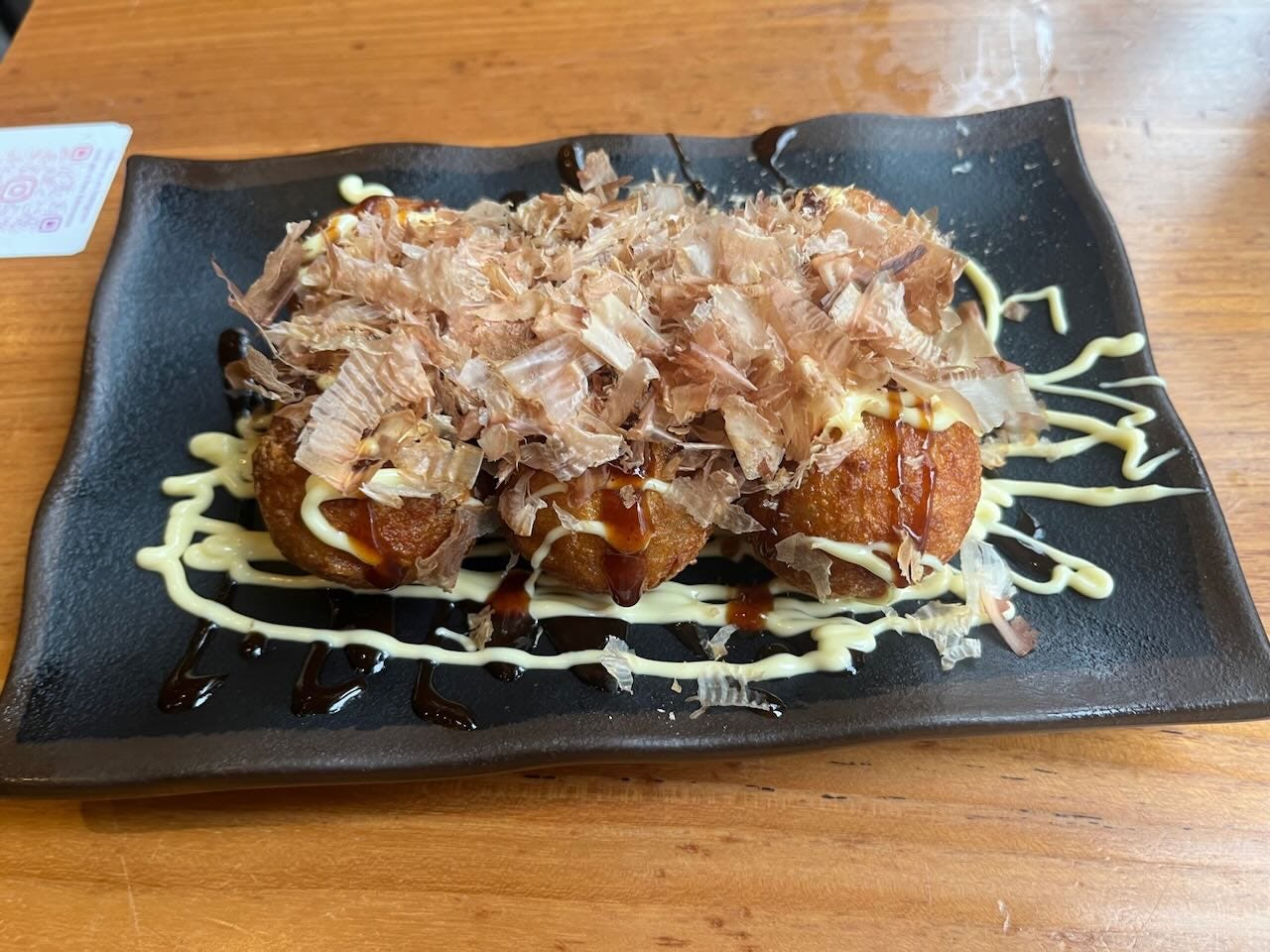
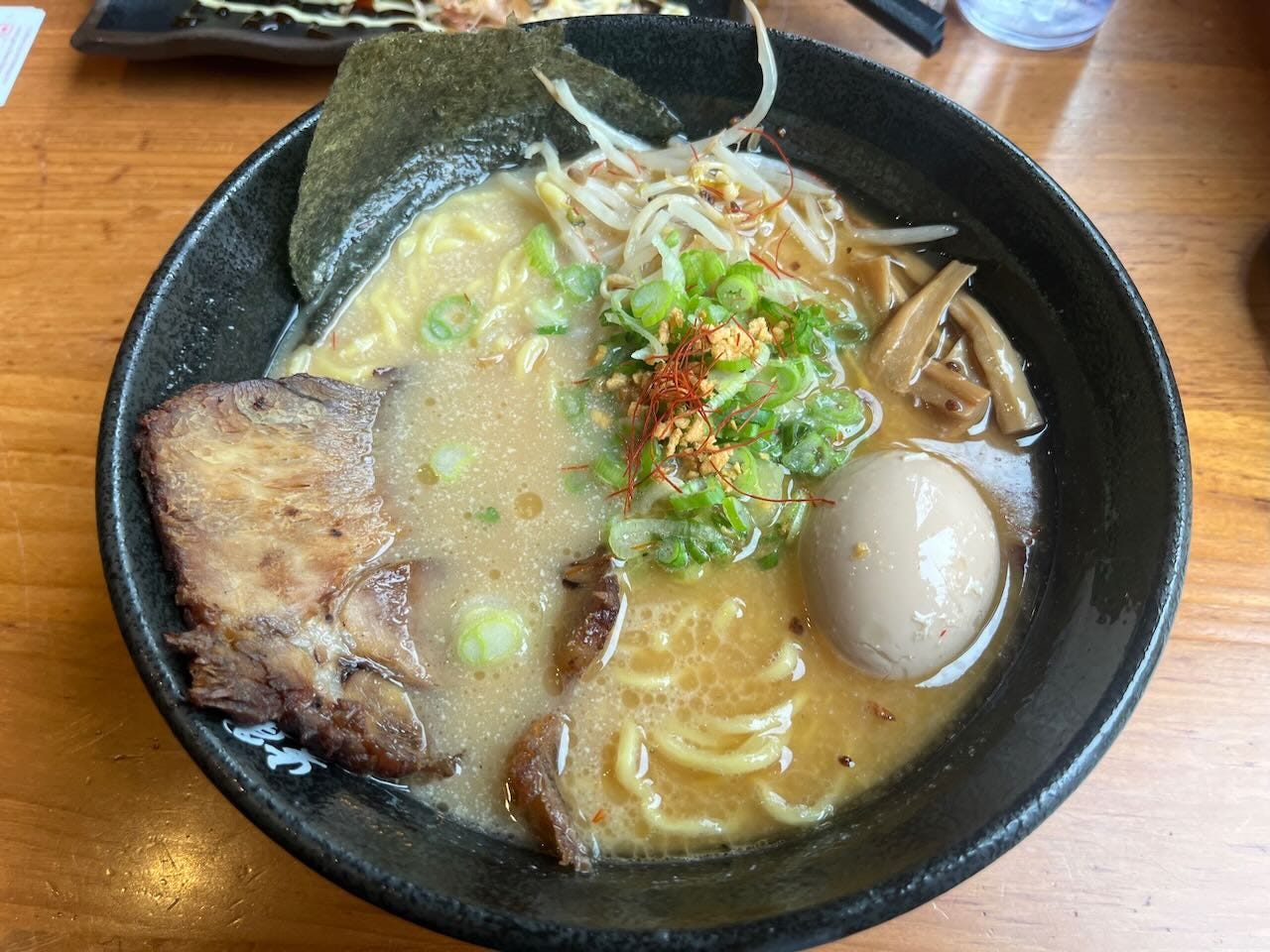

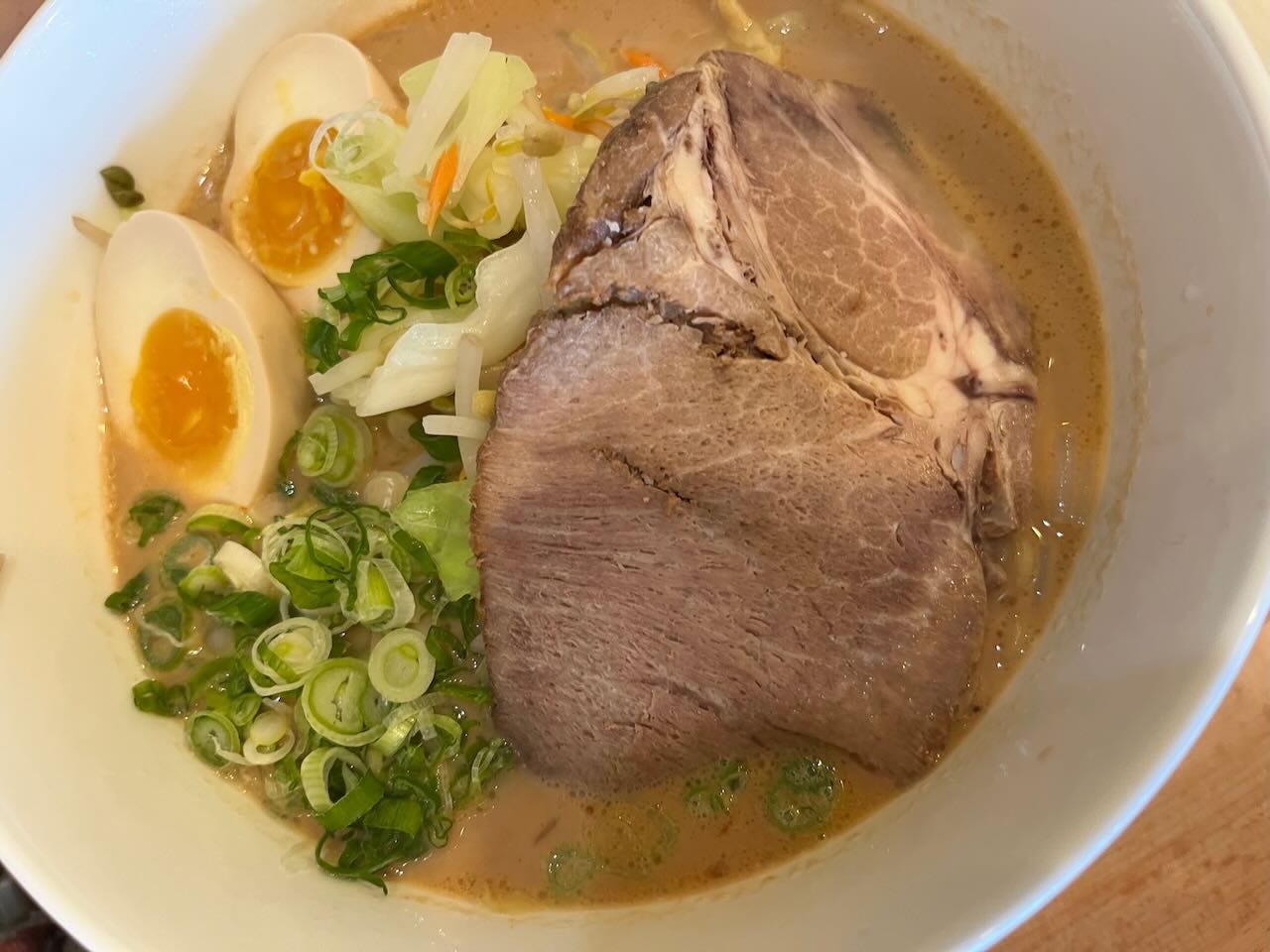

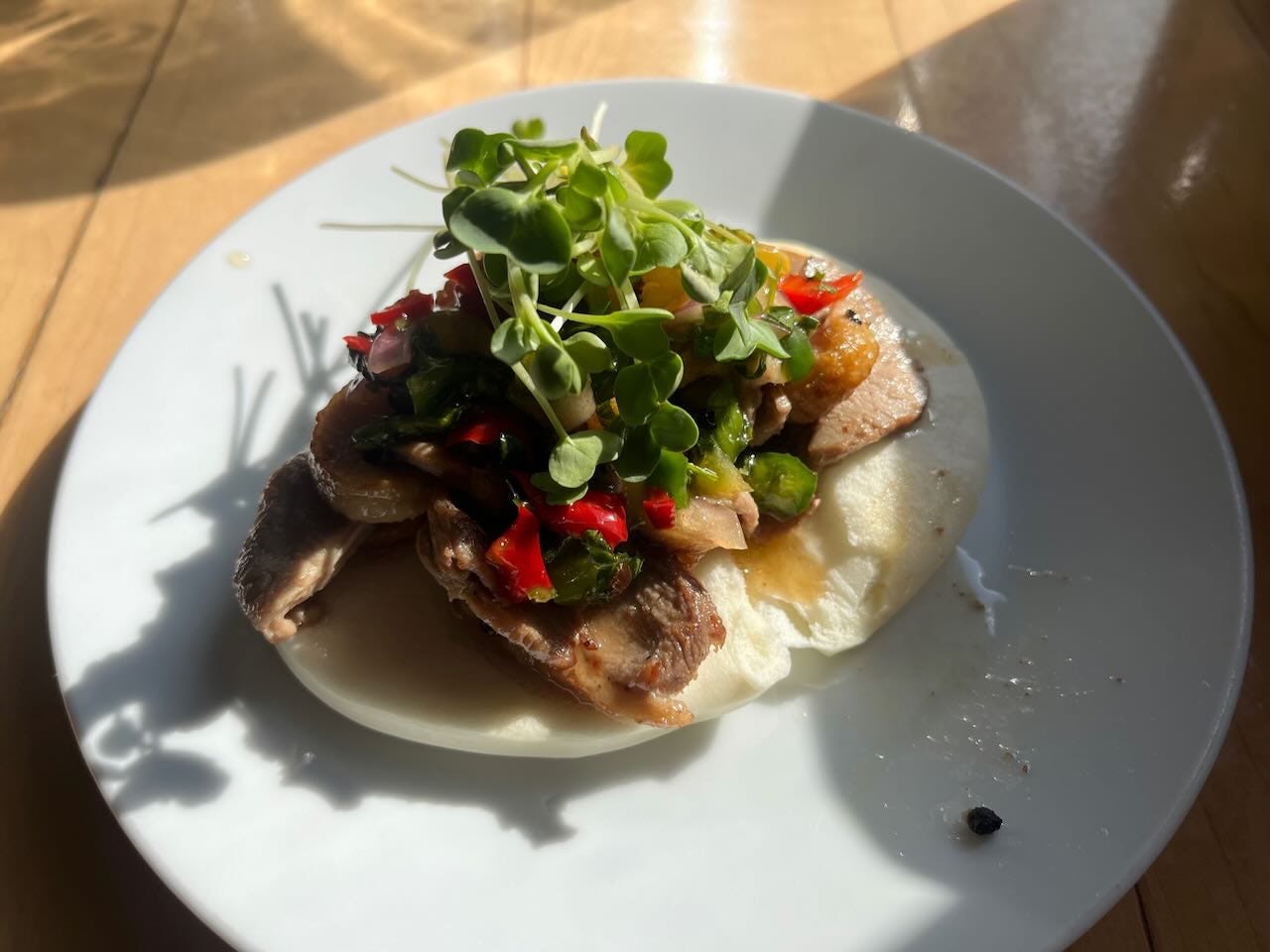

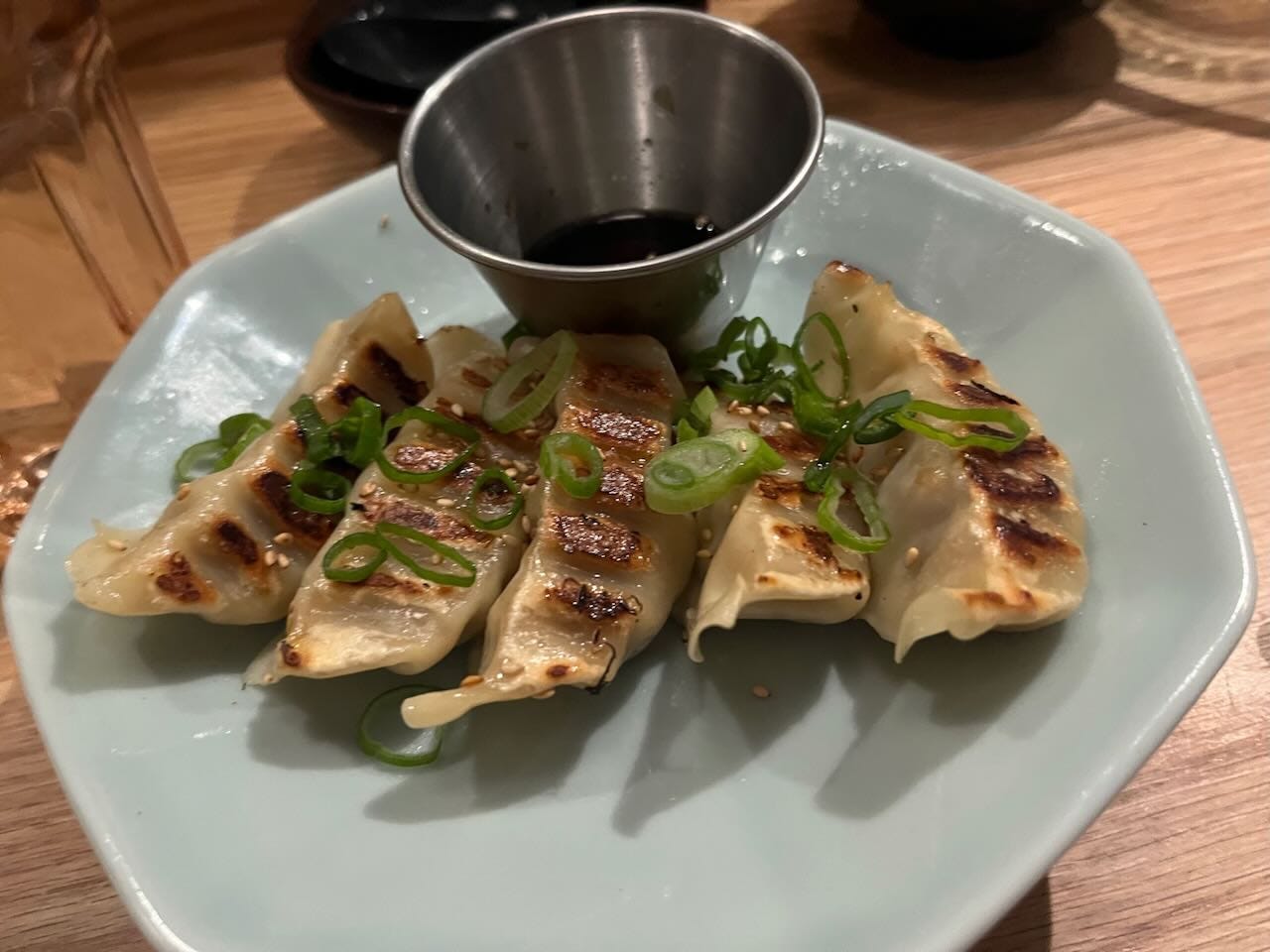
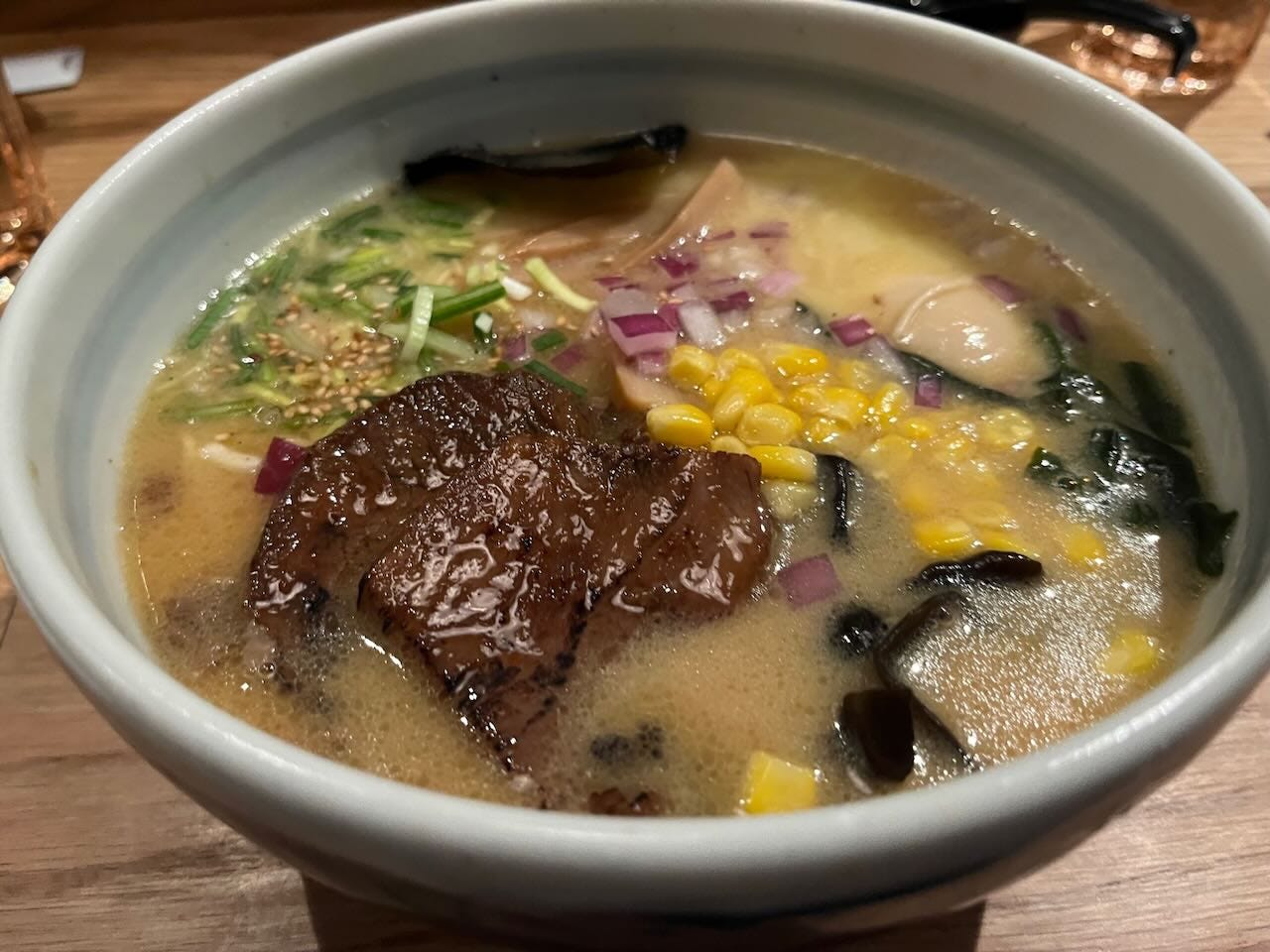

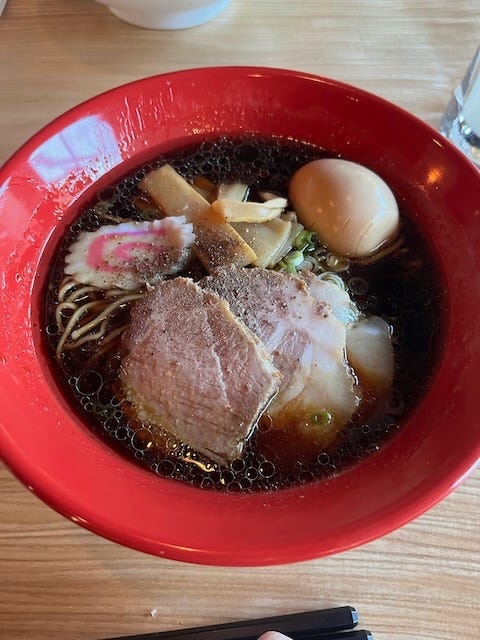
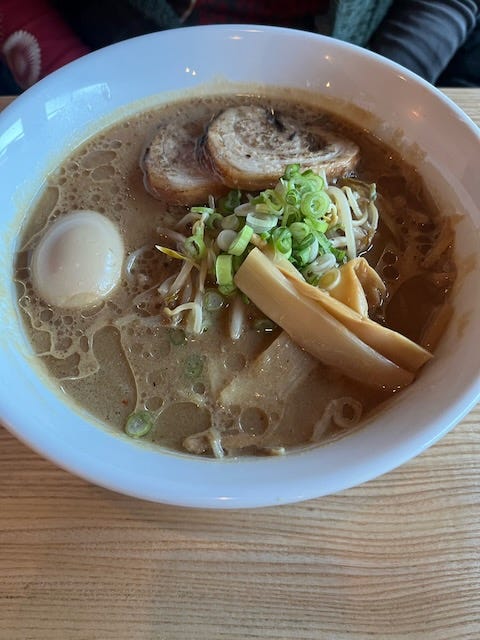
All those dishes look delicious!